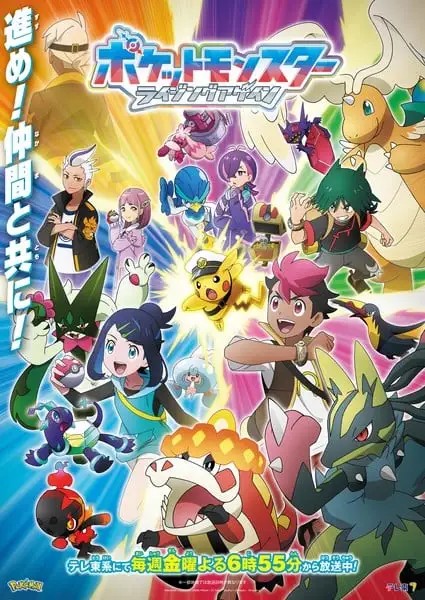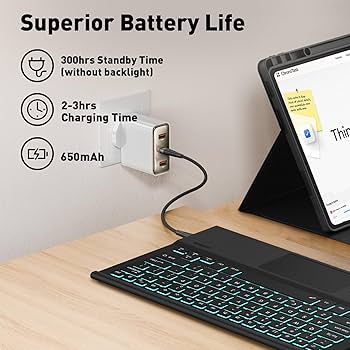The Evolution of Game Marketing: How Twitch Became the Epicenter of Gaming News
In the ever-evolving landscape of the Gaming Industry, the way we consume Gaming News and experience Game Releases has undergone a seismic shift. Not long ago, the industry operated on a carefully controlled schedule of print magazine exclusives, embargoed Game Reviews, and spectacular, yet distant, E3 stage presentations. Today, that paradigm has been completely upended by the raw, immediate, and community-driven power of live streaming. At the heart of this revolution is Twitch, a platform that has transcended its origins as a simple streaming service to become the definitive nexus for Gaming Culture, marketing, and real-time news dissemination.
This transformation is not accidental. Twitch provides a unique ecosystem where developers, content creators, and the Gaming Community converge. A new trailer for an anticipated AAA Game isn’t just watched; it’s experienced collectively, with thousands of viewers reacting in real-time via chat. An Indie Game developed by a small team can achieve viral success overnight, propelled by the genuine enthusiasm of a single influential streamer. This platform has become the modern-day town square for everything related to Video Games, from major Esports News tournaments in Valorant or League of Legends to intimate developer Q&As about upcoming RPG Games. Understanding the mechanics and impact of Twitch News is no longer just for marketers; it’s essential for anyone invested in the world of PC Gaming, Console Gaming, and beyond.
From Press Releases to Live Reveals
The traditional model of disseminating gaming information was a one-way street. A developer would issue a press release, and journalists would report on it. The modern approach, facilitated by Twitch, is a dynamic, multi-directional conversation. Instead of reading about a new feature in an upcoming Call of Duty update, players can watch their favorite pro streamer test it live, offering instant, unfiltered feedback. This immediacy closes the gap between the creators and the consumers. Announcements on platforms like Steam News or Epic Games News are now frequently paired with a “go-live” event on Twitch, where developers join streamers to play the game and answer questions directly from the community. This strategy not only generates significant hype but also builds a foundation of trust and transparency that polished press releases could never achieve.
The Power of Authenticity and Community
The core currency of the Twitch ecosystem is authenticity. Viewers flock to streamers they trust, whose reactions and opinions are perceived as genuine. When a creator expresses excitement for a new title, that sentiment is far more powerful than a scripted advertisement. This dynamic has become a cornerstone of modern game marketing. Developers now understand that getting their game into the hands of the right streamers can be more impactful than a multi-million dollar ad campaign. The community’s response, visible in chat and on social media, provides an instantaneous litmus test for a game’s potential success. This feedback loop is invaluable for Game Development, allowing studios using engines like Unity or Unreal Engine to gather data and make crucial adjustments to Game Design before and after launch.
The Mechanics of a Successful Twitch Campaign: A Deep Dive into Modern Strategies
Leveraging Twitch for a successful game launch is a science and an art, involving a sophisticated blend of technical integration, community incentives, and strategic partnerships. Developers who master these mechanics can transform a standard release into a cultural event, dominating the conversation and driving incredible player acquisition. The most effective campaigns are not just about paying for exposure; they are about creating a symbiotic relationship where the developer, the streamer, and the viewer all derive tangible value.
Twitch Drops: The Ultimate Engagement Tool

Perhaps the most powerful tool in the modern game marketing arsenal is the Twitch Drop. This feature allows developers to grant in-game rewards—such as cosmetic items, beta access keys, or unique equipment—to viewers who are watching specific streams of their game. The psychological and practical impact is profound. Firstly, it creates a powerful incentive to watch, artificially inflating a game’s viewership numbers and propelling it to the top of Twitch’s browse page. This increased visibility creates a snowball effect, attracting organic viewers who are curious about the “next big thing.”
For example, a new Battle Royale game might offer an exclusive weapon skin via Drops during its launch week. This not only encourages existing fans of games like Fortnite or Apex Legends to tune in but also gives them an immediate reason to download and play the game to use their new reward. Similarly, upcoming MMORPG News often revolves around beta key Drops, creating a sense of urgency and exclusivity that builds a dedicated player base before the game is even officially released. The technical integration is key; a seamless process for linking game accounts to Twitch is crucial for a positive user experience. When executed well, Drops can be the single most effective driver of launch-day engagement.
Influencer Marketing and Sponsored Streams
Beyond automated tools like Drops, direct collaboration with content creators remains a vital strategy. This goes far beyond simply sending a game key. A successful influencer campaign involves identifying streamers whose audience and personal brand align with the game. A developer of a complex Strategy Game would seek out a creator known for their analytical and tactical gameplay, whereas a fast-paced title in the FPS Games genre would partner with a former pro known for their incredible reflexes.
These partnerships can range from a single sponsored stream to a multi-week campaign that follows a game from closed alpha to full release. The most successful examples feel less like advertisements and more like genuine content. A streamer who is truly enjoying a game will communicate that passion to their audience, leading to higher conversion rates. We’ve seen this pattern with countless titles, where a game languishes in relative obscurity until a handful of major streamers discover it, catapulting it to the top of the sales charts on Steam. This organic discovery, sometimes kickstarted by a targeted sponsorship, is the holy grail of Game Streaming marketing.
The Ripple Effect: How Twitch News Influences the Broader Gaming Industry and Culture
The influence of Twitch extends far beyond game launches and marketing campaigns. The platform acts as a cultural trendsetter, shaping everything from player behavior and hardware purchasing decisions to the very principles of Game Design. What happens on Twitch doesn’t stay on Twitch; it sends ripples across the entire gaming ecosystem, affecting the markets for PlayStation News, Xbox News, and Nintendo News alike.
Shaping Hardware and Peripheral Markets
The “pro setup” has become an aspirational goal for many gamers, and Twitch is the ultimate showroom. When a top-tier Counter-Strike or Overwatch player showcases their skills, viewers don’t just see the gameplay; they see the tools. The specific Gaming Mouse they use for precise aiming, the responsive Gaming Keyboard for rapid inputs, and the crystal-clear Gaming Headset for critical audio cues all become objects of desire. This has a direct and measurable impact on the sales of Gaming Peripherals.
This effect extends to core Gaming Hardware as well. Streamers often display their PC specs, discussing the performance of their Graphics Cards and processors. Benchmarks and reviews are one thing, but seeing a game run flawlessly at high frame rates on a high-refresh-rate Gaming Monitor provides powerful social proof. This influences consumer choices for everything from pre-built Gaming PCs and Gaming Laptops to individual components. Even specialized hardware like Racing Wheels and Flight Sticks see sales spikes when a popular streamer dives into a simulation game. The Gaming Tech industry now views top streamers as essential brand ambassadors.

Impact on Game Design and Development
The concept of “streamability” has become a critical consideration during the Game Development process. Developers are now designing games not just to be played, but to be watched. This means prioritizing mechanics that create high-stakes, shareable moments: dramatic final circles in a Battle Royale, incredible outplays in a MOBA like Dota 2, or hilarious physics-based fails in a party game. Games with high visual clarity and exciting spectator modes are inherently more Twitch-friendly.
Furthermore, Twitch serves as a massive, real-time beta testing platform. During early access phases, developers can watch thousands of hours of gameplay, identifying bugs, exploits, and balancing issues far more quickly than with an internal QA team. The constant feedback from streamer and viewer commentary provides invaluable qualitative data. A streamer complaining that a certain weapon is overpowered can lead to a balance patch within days. This iterative design process, driven by the community, helps create more polished and enjoyable final products, whether it’s a massive open-world title or a niche experience in VR Gaming or AR Gaming.
Navigating the Twitch Ecosystem: Best Practices and Common Pitfalls
For both developers and consumers, successfully navigating the Twitch ecosystem requires a strategic approach. While the platform offers immense opportunities, it also presents potential pitfalls that can undermine a campaign or lead to a poor user experience. Understanding the best practices is key to maximizing the benefits while avoiding common mistakes.
For Developers and Publishers

Best Practices:
- Authentic Partnerships: Select streamers who genuinely align with your game’s genre and community. An inauthentic, forced sponsorship is easily spotted by savvy viewers and can backfire.
- Compelling Rewards: When using Twitch Drops, ensure the rewards are desirable and exclusive enough to motivate viewership. A generic, low-effort item will not generate the intended hype.
- Technical Readiness: Ensure your backend systems and account-linking processes are robust and tested before launching a Drops campaign. Technical failures can lead to widespread community frustration.
- Community Engagement: Don’t just broadcast; interact. Have developers present in the chats of partnered streams, answer questions, and acknowledge feedback. This builds goodwill and a loyal following.
Common Pitfalls:
- Ignoring Niche Creators: Focusing only on the top 0.1% of streamers can be expensive and less effective. Engaging with mid-tier and niche creators can foster a more dedicated, grassroots community.
- Over-saturating the Market: Running too many sponsored streams or Drops simultaneously can lead to viewer fatigue and diminish the perceived value of each campaign.
- Poor Communication: Lack of clarity about Drop schedules, eligibility, and reward delivery can create confusion and anger within the community.
For Viewers and Gamers
Best Practices:
- Account Security: Ensure you are linking your official game account only through secure, official channels provided by Twitch and the game developer.
- Do Your Research: While a streamer’s enthusiasm can be infectious, always supplement it with other sources like independent Game Reviews and gameplay videos before making a purchase.
- Participate and Enjoy: Be an active part of the community. Engaging in chat, discovering new Indie Games, and participating in events is the best way to experience the culture of Game Streaming.
Common Pitfalls:
- Scam Streams: Be wary of fake channels that promise exclusive Drops but are actually phishing for account information. Look for the “Drops Enabled” tag and verify the streamer’s legitimacy.
- FOMO (Fear of Missing Out): Don’t feel pressured to watch streams or buy games just for limited-time cosmetic items. Prioritize your enjoyment and financial well-being.
Conclusion: The Unmissable Hub of Modern Gaming
Twitch has cemented its position as far more than a platform for watching Video Games; it is the vibrant, beating heart of the modern Gaming Industry. It has fundamentally democratized the flow of information, giving a powerful voice to individual creators and fostering a direct line of communication between developers and their communities. From orchestrating massive launch day events for AAA Games to catapulting obscure Indie Games into the stratosphere, its influence is undeniable. The platform dictates trends in Gaming Hardware, shapes the very fabric of Game Design, and serves as the primary source of news and culture for millions.
For anyone involved in this world—whether you are a developer, a marketer, a competitive player, or simply a fan—understanding the dynamics of Twitch is no longer optional. It is the crucible where hype is forged, communities are built, and the future of gaming is written in real-time, one stream at a time. As the industry continues to evolve with technologies like Cloud Gaming and VR Gaming, Twitch will undoubtedly remain at the center of the conversation, a true nexus for all things gaming.












